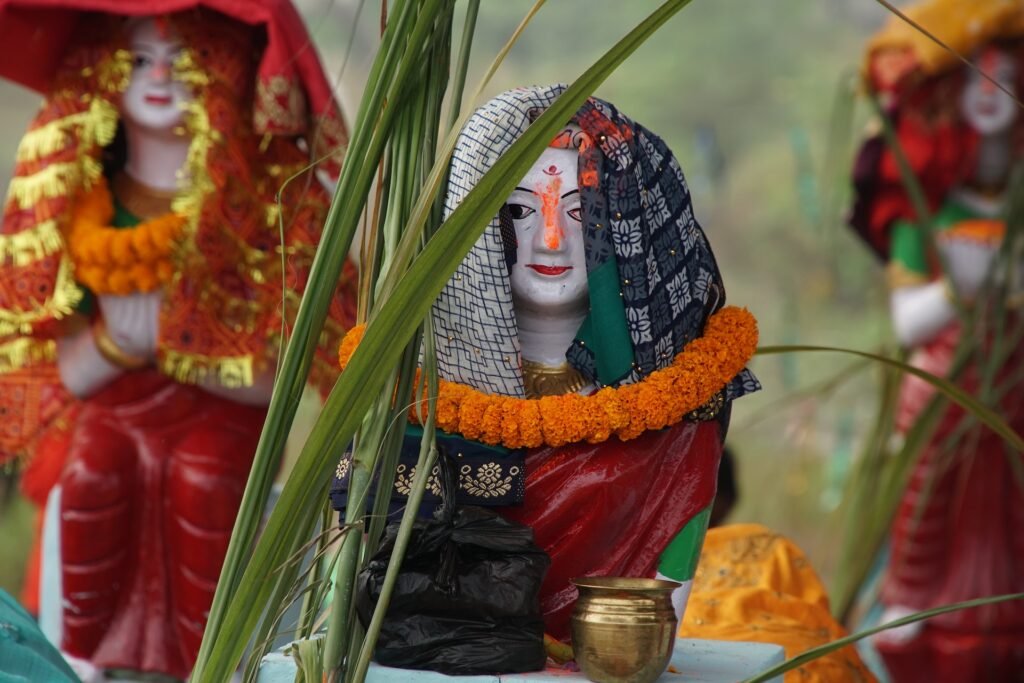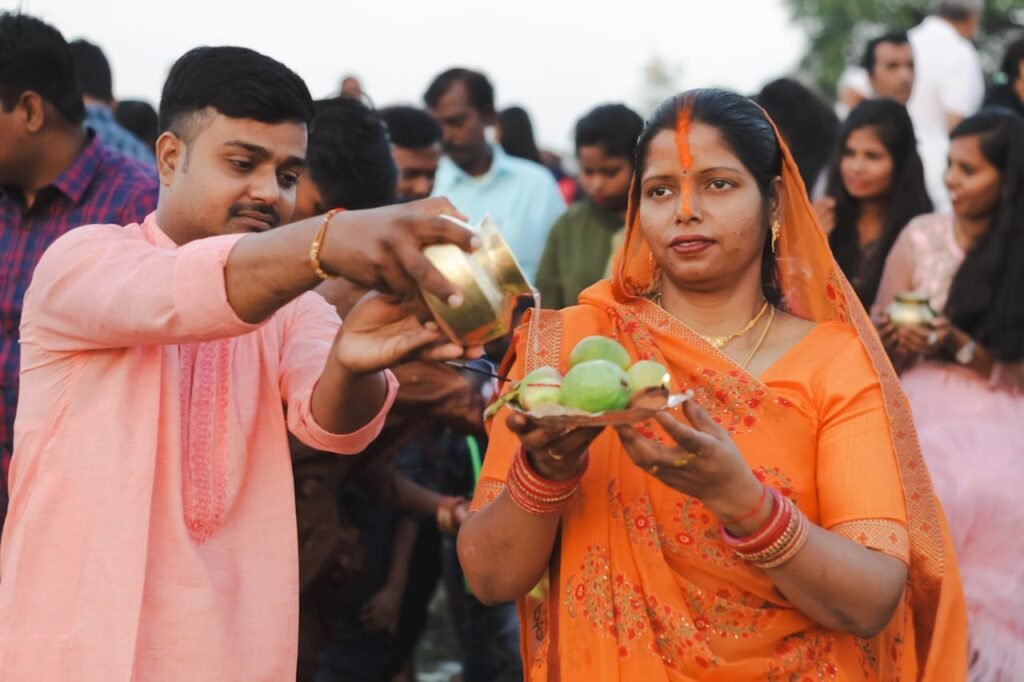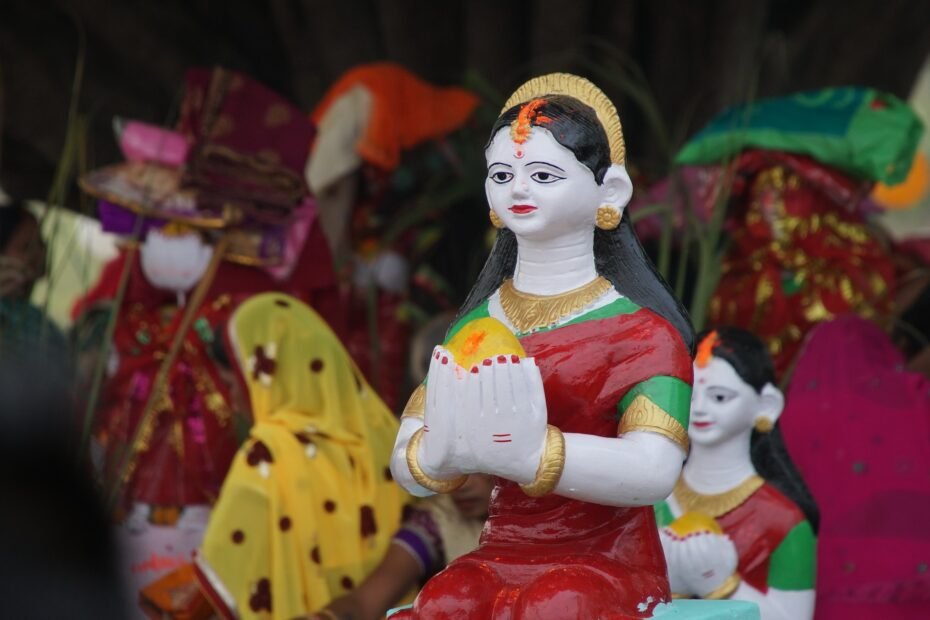Chhath Puja, a revered Hindu tradition, stands as a testament to the rich cultural tapestry woven through the fabric of India. Rooted in ancient Vedic literature, this celebration has transcended time, preserving its sanctity and significance. At its core, Chhath Puja is a devotion-filled journey, an expression of gratitude towards the Sun God for sustaining life on earth. As we embark on this exploration, we delve into the historical roots, rituals, and regional variations that make Chhath Puja a cherished and timeless tradition.
Origins of Chhath Puja

Ancient Beginnings
Tracing the origins of Chhath Puja takes us back to the Rigveda, one of the oldest sacred texts in the world. In this ancient scripture, hymns dedicated to the Sun God, Surya, lay the groundwork for the practices observed in Chhath Puja. Over the centuries, these rituals evolved, intertwining with local customs and beliefs to form the vibrant celebration we know today. The antiquity of Chhath Puja not only adds a sense of sacred continuity but also highlights its resilience in adapting to changing times.
Learn more about the significance of Chhath Puja on chhath.org
Legends and Mythology
Myths and legends enshroud Chhath Puja, adding layers of mystique and reverence to the tradition. One prominent legend tells the story of Draupadi, the wife of the Pandavas, who observed rigorous penance dedicated to the Sun God, seeking his blessings. These mythical narratives not only provide cultural context but also infuse the rituals with a profound spiritual essence, connecting devotees to the divine through a shared historical and mythological consciousness.
Enhance your understanding of Vedic literature with “THE HINDUS” by Wendy Doniger
Chhath Puja Rituals

Day 1: Nahay Khay (First Day of Rituals)
The Nahay Khay, or the first day of Chhath Puja, sets the stage for the devotees’ spiritual journey. It commences with a ritualistic bath in a sacred water body, symbolizing the purification of the body and soul. Devotees adhere to a specific diet, partaking in simple and sattvic (pure) food, further emphasizing the importance of cleanliness and self-discipline. This day acts as a preparatory step, cleansing both the external and internal self for the ensuing days of intensive rituals.
Explore organic and traditional ingredients for your sattvic diet with “Organic Indian Lentils Variety Pack“
Day 2: Kharna (Preparations for the Main Rituals)
As the second day unfolds, devotees observe a stringent fast, abstaining from water and food throughout the day. The day culminates in the evening with the preparation of offerings, including the traditionalkheer (sweet rice pudding) and fruits. The fasting and preparation symbolize devotion, discipline, and the willingness to make sacrifices for spiritual growth. The meticulous nature of the preparations reflects the devotees’ commitment to honoring the Sun God with the utmost sincerity.
Enhance your kitchen with a “Traditional Indian Cooking Pot“
Day 3: Sandhya Arghya (Evening Offerings to the Sun)
The main rituals of Chhath Puja commence on the third day with Sandhya Arghya, performed during the tranquil moments of the sunset. Devotees gather by the water body, offering the traditionalprasad (offerings) to the setting sun. This act symbolizes gratitude for the energy provided by the Sun and seeks blessings for the well-being of family members. The serene backdrop of the sunset adds a contemplative dimension to the rituals, creating a spiritual ambiance that connects the devotees with the divine forces.
Illuminate your space with “Himalayan Salt Lamp“
Day 4: Usha Arghya (Morning Offerings to the Sun)
Concluding the Chhath Puja, the fourth day involves welcoming the sunrise with prayers and offerings. Devotees, often standing in waist-deep water, express their gratitude for the new day and the life-giving energy of the Sun. Usha Arghya symbolizes the cyclic nature of life, emphasizing renewal and continuity. The rising sun becomes a metaphor for the perpetuity of existence, reinforcing the spiritual connection between the devotees and the cosmic forces.
Enhance your meditation space with “Sunrise Alarm Clock”
Chhath Puja Across Regions
Regional Variations
Chhath Puja, while maintaining its core principles, manifests differently across various states of India, each adding unique customs and adaptations. In Bihar, the heartland of Chhath Puja, the rituals may differ from those observed in Uttar Pradesh or West Bengal. These regional variations contribute to the cultural diversity of India, showcasing the dynamic nature of traditions as they intermingle with local beliefs and practices.
Immerse yourself in the cultural richness of different Indian states with “The Cultural Atlas of India” by Gordon Johnson
Cultural Significance
Beyond its regional diversity, Chhath Puja serves as a unifying cultural thread that binds communities across India. The celebration goes beyond religious boundaries, fostering a sense of shared cultural identity. The cultural significance lies not only in the rituals but also in the collective experience of devotion and celebration, reinforcing a sense of community and shared heritage.
Discover more about Indian cultural diversity on culturalindia
Symbolism in Chhath Puja

Worshiping the Sun God
The central theme of Chhath Puja revolves around the worship of the Sun God, Surya. Symbolically, the Sun represents the cosmic energy that sustains life on Earth. Devotees believe that through their prayers and offerings, they can absorb the divine energy of the Sun, purifying their mind, body, and soul. The Sun, as a symbol of life and vitality, becomes a focal point for spiritual connection and rejuvenation.
Embark on a spiritual journey with “The Bhagavad Gita”
Cultural Symbolism
Chhath Puja integrates various elements of nature into its rituals, each carrying cultural symbolism. The use of natural materials, such as bamboo baskets and sugarcane sticks, connects the celebration to the local environment. Additionally, the offerings of fruits, sugarcane, and other locally significant items hold deeper meanings, reflecting the agricultural and cultural practices of the region.
Enhance your connection with nature through “Handmade Bamboo Basket“
Challenges and Modern Adaptations
Environmental Concerns
As Chhath Puja involves the immersion of offerings in water bodies, environmental concerns have emerged, particularly regarding pollution and ecological impact. Efforts are being made to promote eco-friendly celebrations, encouraging the use of biodegradable materials and responsible disposal practices. Balancing the spiritual significance of the rituals with environmental sustainability is a challenge that the community is actively addressing.
Urbanization and Changing Traditions
In urban landscapes, the traditional celebration of Chhath Puja undergoes adaptations to fit the modern lifestyle. Limited access to natural water bodies and hectic schedules pose challenges, prompting devotees to find innovative ways to preserve the essence of the rituals. While the core traditions remain intact, the urban setting necessitates creative adjustments to accommodate the practical constraints of city life.
Bring tradition to your urban space with “Portable Traditional Prayer Mat“
Impact of Chhath Puja on Community
Social Cohesion
Chhath Puja fosters a sense of community bonding, transcending individual differences and bringing people together in shared rituals. The act of collectively observing the rituals creates a sense of unity and shared purpose. Communities gather by water bodies, public spaces, or specially designated areas, reinforcing social bonds through shared devotion.
Celebrate community togetherness with “Traditional Indian Floor Seating Cushions“
Generational Transmission
Passing down traditions through generations is a crucial aspect of Chhath Puja. Families come together to participate in the rituals, ensuring the continuity of cultural practices. The narratives of grandparents and parents become a source of cultural heritage, creating a bridge that connects the past, present, and future.
Reflection on a Timeless Tradition
Embracing the Rich Cultural Heritage
In concluding our exploration of the story of Chhath Puja, we find ourselves immersed in a cultural heritage that transcends time. Chhath Puja is not just a festival; it’s a living narrative that weaves the tapestry of cultural identity. The rituals, symbols, and community impact collectively embody the enduring spirit of devotion and unity among its practitioners. In embracing this rich cultural heritage, we recognize Chhath Puja as a celebration that goes beyond religious and regional boundaries, standing as a symbol of unity and shared devotion.
Explore the Illuminating story of Diwali, a festival of lights, and discover the vibrant tapestry of cultural celebrations intertwined with the timeless traditions of Chhath Puja.
FAQ
What is the significance of Chhath Puja?
Chhath Puja is significant as a Hindu festival dedicated to the worship of the Sun God. It symbolizes purity, gratitude, and the cyclical nature of life.
How is Chhath Puja celebrated in different regions?
Chhath Puja is celebrated with regional variations, incorporating unique customs and traditions. Each state in India adds its cultural touch to the festivities.
What are the environmental concerns associated with Chhath Puja?
The immersion of offerings in water bodies during Chhath Puja raises environmental concerns. Efforts are being made to promote eco-friendly practices and minimize the ecological impact.
How has Chhath Puja adapted to urbanization?
In urban landscapes, Chhath Puja has adapted to fit modern lifestyles. Devotees find ways to preserve the traditional essence while accommodating the constraints of urban living.
What role does Chhath Puja play in community bonding?
Chhath Puja serves as a communal celebration, bringing people together in shared rituals. It fosters a sense of community and strengthens cultural ties.
Disclaimer: This article contains Amazon affiliate links. If you make a purchase through these links, we may earn a small commission at no additional cost to you. This helps support and maintain our website.
